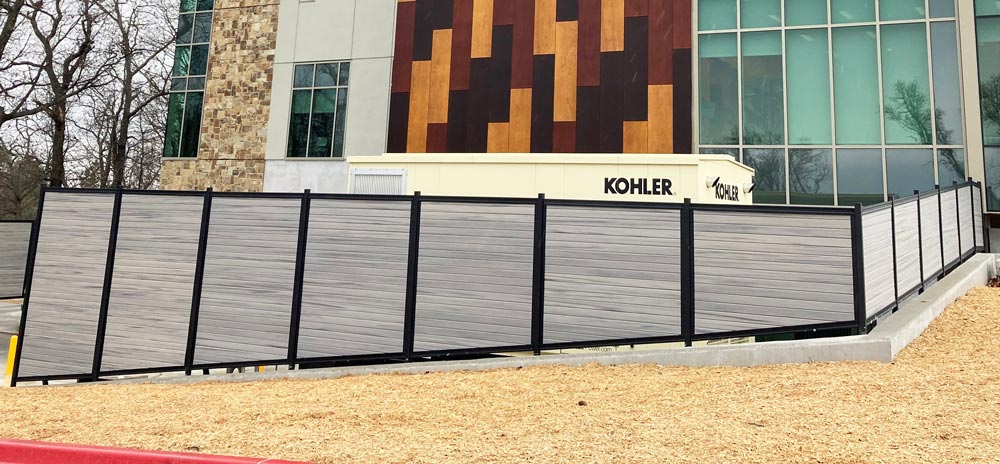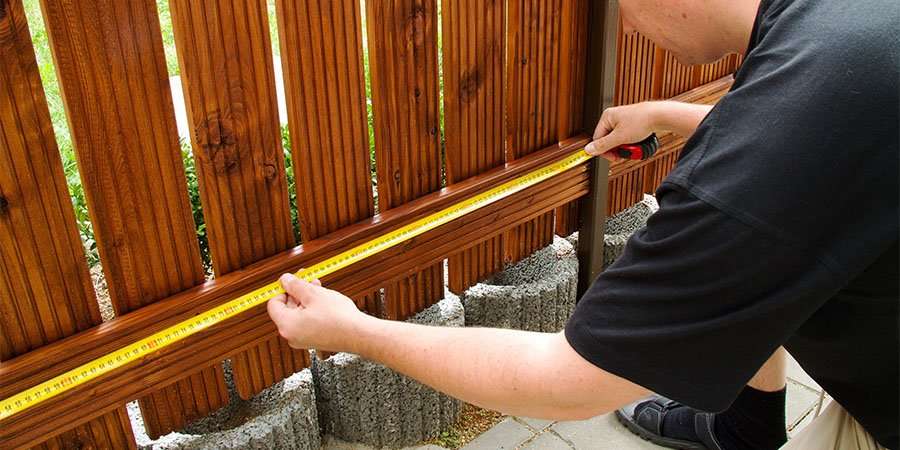All Categories
Featured

Fencings are a vital part of your building, providing privacy, security, and aesthetic worth. They are frequently exposed to the elements and can suffer from weather-related damages over time. Whether it's solid winds, rain, snow, or extreme warm, weather can slowly weaken your fencing, bring about pricey fixings or substitute. There are a number of steps you can take to safeguard your fencing from weather-related damage and prolong its life expectancy. Below's just how you can protect your fence against the elements.
- Choose the Right Product. The kind of material your fencing is made from plays a substantial duty in exactly how well it will hold up against climate condition. Some products are normally more resistant to damages than others. As an example:
Wood Fences: While timeless and lovely, timber can be prone to moisture, rot, and pests. Nevertheless, pressure-treated timber or cedar can offer much better resistance to these problems. Plastic Fences: Plastic is extremely immune to dampness, rot, and pests. It likewise stands up well to harsh sun and hefty rainfall. Metal Fences: Wrought iron or light weight aluminum fences are resilient and can hold up against a variety of weather conditions. They can, nonetheless, struggle with corrosion over time, especially if not correctly covered. Compound Fences: Made from a mixture of wood fibers and plastic, composite fences are extra resistant to weather-related damage compared to typical timber fences. Choosing the appropriate product for your region's climate is the very first step in securing your fencing from weather damages.
- Seal or Stain Wooden Fences. Wooden fencings are specifically vulnerable to damage from moisture, UV rays, and temperature variations. One of the most reliable means to secure your timber fencing is by using a protective sealant or tarnish. These items help:
Stop Water Damage: Sealers create a water-resistant obstacle, avoiding moisture from permeating into the wood and triggering rot, mold, or mold. Shield Versus UV Damages: A good discolor or sealer will likewise block harmful UV rays from the sunlight, which can create wood to dry, crack, and tarnish with time. Preserve the Fencing's Appearance: Routine staining helps maintain the natural beauty of the wood and expands its life-span. It's recommended to reapply the stain or sealant every 1-- 2 years to maintain your surround excellent condition.
- Install an Obstacle for Wind Security. Solid winds can create significant damages to your fence, particularly if it is weak or high. Wind can flex or break wooden panels, loosen fencing blog posts, and even cause the whole fence to collapse. Installing a windbreak-- such as planting shrubs, hedges, or setting up a mesh obstacle-- can help shield your fence from high winds.
In addition, you can strengthen the articles with concrete or steel braces to offer additional stability and protect against leaning or moving.
- Trim Overhanging Branches. Overhanging tree branches can posture a major threat to your fence throughout tornados or high winds. Dropping branches can break panels or damage the fence posts, leading to costly repairs. Frequently trim any type of branches that hang over your fencing, particularly if they're in close distance to it. Maintaining the branches cut down lowers the threat of branches breaking short and creating damage to the fence.
- Routine Inspections and Upkeep. Carrying out regular maintenance and examinations is crucial to catching prospective problems before they rise. After a heavy storm, examine your fencing for any type of indicators of damages, such as loose panels, leaning posts, or broken areas. Looking after little issues before they become larger ones can help prolong the life of your fencing.
In addition, cleansing your fence periodically to get rid of mold, dust, or particles can aid maintain its appearance and honesty. For wood fencings, carefully pressure clean the surface to get rid of built-up grime, and for plastic fencings, make use of a moderate cleaning agent to clean any type of spots.

- Ensure Correct Water Drainage. Water damages is one of the most usual weather-related issues that affect fences. Poor water drainage can lead to standing water around your fencing articles, which can trigger the posts to rot or compromise over time.
- Apply a Protective Finish to Metal Fencings. Steel fences, such as those made of iron or steel, are highly long lasting but can be susceptible to rust if not appropriately kept. Using a protective finishing or paint that is particularly developed for metal can assist avoid corrosion and rust. Be sure to check the fencing periodically for any kind of indicators of rust, and address it promptly by fining sand and painting the affected locations.

Verdict. Your fence is a useful investment, and shielding it from weather-related damages will assist ensure that it remains to serve its purpose for several years ahead. By selecting the best products, routinely preserving your fencing, and taking steps to protect it from the elements, you can reduce weather-related damages and expand its lifespan. Whether you're managing solid winds, hefty rainfall, or the severe sunlight, these easy steps can go a long method in maintaining the condition and appearance of your fence, conserving you time and cash in the future.
Latest Posts
Explore Limited-Time Auto Repair Deals in Chicago at Montclare Auto Repair
Published May 26, 25
1 min read
Find Brake Repair & More: Comprehensive Repair Options from Montclare Auto Repair
Published May 26, 25
1 min read
Learn How to Reduce Expenses on Car Maintenance with Montclare Auto Repair’s Special Deals
Published May 25, 25
1 min read
More
Latest Posts
Explore Limited-Time Auto Repair Deals in Chicago at Montclare Auto Repair
Published May 26, 25
1 min read
Find Brake Repair & More: Comprehensive Repair Options from Montclare Auto Repair
Published May 26, 25
1 min read
Learn How to Reduce Expenses on Car Maintenance with Montclare Auto Repair’s Special Deals
Published May 25, 25
1 min read